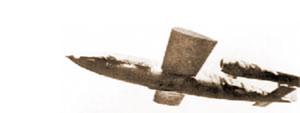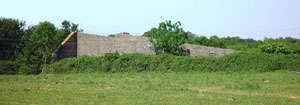Nehou
La Flague
V1 Launching Site: Buzz bomb note and the Battle of England
July 6th last figures at 6.00 am.

The VI inaccuracy
A very high proportion of the casualties, somewhere around 10 000, not always severe or mortal, has fallen upon London, which represented to the enemy a target 18 miles wide by over 20 miles deep.
On the 2 754 flying bombs launched / 2 752 civilians gets killed.
On July 17th the lay-out of buzz bomb get in place.
A fighter Belt at sea:
- Fighter aircraft will operate under close radio control at a distance of not less than 10 000 yards from the shore.
Coastal Gun belt:
- Concentration of all guns available in 5 000 yards width extending along the coast from Beachy Head to Saint-Margaret’s Bay.
Inland fighter belt:
- Between the coastal gun zone and the balloon barrage, there will be a second fighter belt in which aircraft will operate under running commentary control.
Balloon belt:
- The record of VI trapped was on August 28th, 90 VI9 approach London, 86 were destroyed - Balloon caught: 2, Fighters: 23, Bofors guns: 65.
On September 6th Battle of Britain was over.

A total of 8 000 VI were launched against London, about 2 400 got through.
Total civilian losses were 6 184 Killed and 17 981 seriously injured, but those figures do not tell the whole story, many injured people did not have to stay in hospital and them were unrecorded.
V2 threat.
Total casualties caused by V weapons.
In England were 2 724 killed and 6 476 seriously injured, they were causing twice as much casualties than the V1.
London was not the only V2 target, also Antwerp: 8 696, Liège: 3 141.
Launching V1s from Northern France including Normandy
Spring 1944 the war was going badly for Germany. The first V1 «doodlebugs» were not launched until June 13th - a few days after the D-Day landings. Their long launching ramps were hidden in forests or woods, but easily spotted from the air, so were rapidly bombed. The Germans switched to mobile ramps, which they moved around the Pas-de-Calais area.
Almost 9 250 V1's were fired against London, but less than 2 500 reached their target. In flight they were almost as vulnerable as their ramps: about 2 000 were destroyed by anti-aircraft gunfire; 2 000 by fighter planes, and almost 300 by barrage balloons.